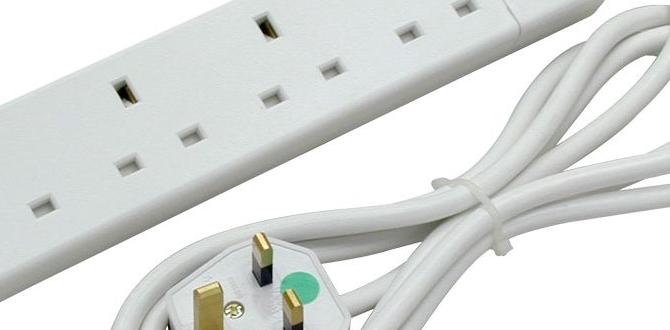Build your own greenhouse with this easy guide to extend your growing season, protect plants, and enjoy fresh produce year-round. Learn the essential steps for a successful DIY greenhouse project!
Dreaming of plump tomatoes in early spring or crisp lettuce well into fall? A greenhouse can make that a reality! Many gardeners feel overwhelmed by the idea of building one, thinking it’s too complex or expensive. But it doesn’t have to be! This guide breaks down exactly how to build a greenhouse, step-by-step. We’ll cover everything you need to know, from choosing a spot to the final touches. Get ready to transform your gardening dreams into a thriving reality!
Why Build a Greenhouse? Your Year-Round Growing Sanctuary
A greenhouse is more than just a shed for your plants; it’s a controlled environment that unlocks a world of gardening possibilities. Imagine shielding delicate seedlings from late frosts, nurturing exotic blooms that wouldn’t survive outdoors, or extending the harvest of your favorite vegetables for months longer. For beginner gardeners, it opens up a forgiving space to learn and experiment. Eco-conscious growers can extend their growing season significantly, reducing reliance on store-bought produce and enjoying fresh, hyper-local food. Families can involve kids in a rewarding project, teaching them about plant life cycles and where food comes from. Even those with limited space can benefit; a smaller greenhouse might be perfectly suited for urban backyards or patios.
Planning Your Greenhouse Project: Location, Size, and Type
Before you grab a single tool, a little planning goes a long way. The right decisions now will save you headaches later.
Choosing the Perfect Spot
Think of your greenhouse as a sun-worshipper. It needs plenty of light!
- Sunlight: Aim for a spot that gets at least 6–8 hours of direct sunlight per day, especially during the shorter days of fall and winter. Southern or southeastern exposure is often ideal in the Northern Hemisphere.
- Drainage: Pick a well-drained area. You don’t want water pooling around the base of your greenhouse, which can lead to foundation issues and plant root rot. A slightly elevated spot is perfect.
- Wind Protection: While you want sun, excessive wind can be harsh. Consider natural windbreaks like fences or hedges, but ensure they don’t cast too much shade on your greenhouse.
- Accessibility: Make sure you can easily access your greenhouse with tools, water, and wheelbarrows. Proximity to your home is also convenient, especially during inclement weather.
- Level Ground: The site needs to be as level as possible. You might need to do some minor grading to achieve this.
Determining Size and Shape
How much space do you need? Consider what you plan to grow.
- For Beginners: A small, freestanding greenhouse (like 6×8 feet or 8×10 feet) is often a great starting point. It’s manageable for construction and doesn’t require a huge investment.
- For Ambitious Growers: If you plan to grow a wide variety of plants, overwinter perennials, or start a small business, you’ll need more space. Think about walk-in height and ample floor space.
- Consider Your Backyard: Measure your available space. Don’t build a structure that overwhelms your yard or blocks necessary sunlight from your home.
- Shape Matters: Standard rectangular shapes are the easiest to build. Lean-to greenhouses attach to an existing structure and can be great for saving space and utilizing building warmth.
Greenhouse Kits vs. DIY Build
You have two main paths: purchasing a kit or building from scratch.
- Greenhouse Kits: These come with pre-cut pieces and detailed instructions. They are often faster to assemble and can be less intimidating for beginners. Many reputable companies offer kits, such as those found on Greenhouse Megastore, which offers a wide variety of options.
- DIY Build: This offers maximum customization and can often be more budget-friendly if you’re resourceful with materials. It requires more planning, measuring, cutting, and construction skills. This guide focuses on the DIY approach.
Essential Greenhouse Materials and Tools
Gathering your supplies before you start is crucial. Here’s a general list for a basic DIY greenhouse. Prices and availability can vary.
Frame Materials
The frame provides the structure and support.
- Wood: A popular choice for DIYers due to its workability. Pressure-treated lumber is recommended for ground contact, but ensure it’s safe for growing edible plants (look for ACQ or CA treatments). Cedar or redwood are naturally rot-resistant but more expensive.
- PVC Pipe: Lightweight, inexpensive, and easy to work with, especially for hoop-style greenhouses. Not as durable as wood or metal for larger structures.
- Metal Tubing (Galvanized Steel or Aluminum): Very durable and strong, often used in commercial greenhouses or more robust DIY designs. Requires specific tools for cutting and joining.
Glazing Materials (Covering)
This is what lets the light in and traps the heat.
- Polyethylene Film: The most budget-friendly option, often used for temporary or hoop-style greenhouses. UV-treated greenhouse film is recommended for longevity. You’ll typically need to replace it every few years.
- Polycarbonate Panels: A very popular choice for DIY greenhouses. Twin-wall polycarbonate offers good insulation, is shatter-resistant (unlike glass), and diffuses light well. It’s lightweight and relatively easy to cut and install.
- Glass: Traditional and aesthetically pleasing, but expensive, heavy, and fragile. Requires a very sturdy frame and professional installation for larger panes.
- Fiberglass Reinforced Panels (FRP): Durable and diffused light, but can yellow over time and may not transmit as much light as other options.
Foundation and Floor Materials
A solid base is essential for stability.
- Concrete Footings or Piers: For permanent structures.
- Gravel or Pavers: For a permeable and stable floor.
- Wood Skids: For simpler, portable structures.
Hardware and Fasteners
- Screws (deck screws are good for wood)
- Bolts, nuts, and washers
- Hinges (for doors and vents)
- Corner braces or brackets
- Staples or wiggle wire system (for attaching plastic film)
Tools You’ll Likely Need
- Measuring tape
- Level
- Saw (hand saw, circular saw, or miter saw depending on material)
- Drill and drill bits
- Screwdriver bits
- Shovel and rake (for site preparation)
- Utility knife
- Staple gun (if using plastic film)
- Safety glasses and gloves
- Ladder
Step-by-Step: Building a Basic Wooden Frame Greenhouse (Example Guide)
This guide outlines how to build a simple, sturdy wooden frame greenhouse with polycarbonate panels, a popular and achievable DIY project. Adapt measurements to your desired size.
Step 1: Prepare the Site and Foundation
Start by clearing and leveling your chosen spot. For a simple, ground-level greenhouse, you can create a base frame out of pressure-treated lumber (e.g., 4x4s). Dig shallow trenches for the base frame and fill with gravel for drainage. Ensure the frame is level and square.
For a more permanent structure, consider concrete footings or piers. Local building codes may dictate foundation requirements, so it’s wise to check with your municipality, for example, by consulting the U.S. General Services Administration’s resources on building standards, which often touch upon foundation best practices.
Step 2: Build the Base Frame
Construct a rectangular base frame using sturdy lumber (e.g., 2x6s). This will sit on top of your prepared foundation or skids. Ensure all corners are square using a carpenter’s square. This frame is crucial for stability.
Step 3: Erect the Wall Frames
Build individual wall sections on the ground. Use 2x4s for studs, top plates, and bottom plates. Frame out spaces for your door and any planned ventilation windows. Attach these wall sections to the base frame, bracing them as you go. Use a level to ensure each wall is plumb (perfectly vertical).
Step 4: Construct the Roof Frame
Design a simple gable (A-frame) or lean-to roof. For a gable roof, build rafters from 2x4s. Connect them at the peak with a ridge board. Install the rafters onto the top plates of your wall frames, spaced appropriately. You’ll also need to add purlins (horizontal support beams) for attaching your glazing material.
Step 5: Install the Door and Ventilation
Build or purchase a simple door. Hinge it to one of the wall frames, ensuring it swings outward for convenience and safety. Install at least one roof vent or side vents to allow for air circulation and temperature control. Manual vents are simple, but automatic openers are a game-changer!
Step 6: Attach the Glazing (Polycarbonate Panels)
This is where your greenhouse starts to take shape! Cut your twin-wall polycarbonate panels to size. Many manufacturers provide cutting guides. For wood frames, you can attach panels directly using screws with neoprene washers to create a watertight seal. Overlap panels slightly according to manufacturer recommendations. For hoop houses using plastic film, you’ll stretch the film taut and secure it with specialized clips or a wiggle wire extrusion system.
Tip: Always install polycarbonate panels with the UV-protected side facing outwards. This side is usually marked. Check manufacturer instructions carefully.
Step 7: Seal and Finish
Seal any gaps where water or drafts could enter using caulk or weatherstripping, especially around the base, corners, and where panels meet the frame. Paint or stain any exposed wood that isn’t pressure-treated to protect it from the elements.
Step 8: Add Flooring and Interior Setup
Lay down your chosen flooring material (gravel, pavers, or even bare earth if that’s your preference). Install any shelving, potting benches, or hanging systems you need. Ensure good air circulation inside by placing fans if necessary.
Variations: Hoop Houses and Lean-To Greenhouses
While we detailed a wooden frame, other styles are popular for DIYers.
Hoop Houses (Polytunnels)
These are often made with PVC or metal hoops covered in UV-treated greenhouse plastic. They are generally simpler and cheaper to build, excellent for season extension and starting seedlings.
- Pros: Low cost, quick to build, easy to expand or move.
- Cons: Less durable than rigid structures, plastic needs regular replacement, may not withstand heavy snow or strong winds as well.
A basic method involves bending conduit pipes into arches, securing them to a treated lumber base or directly into the ground with rebar stakes, and covering with plastic film. Many guides and videos online show specific techniques.
Lean-To Greenhouses
These are attached to an existing building (like a house or garage), utilizing its warmth and structural support.
- Pros: Can be more energy-efficient, saves material costs on one side, easy access to utilities.
- Cons: Limited by the existing structure’s orientation and size, may block light from house windows.
Construction involves a sturdy wall frame extending from the existing building, with rafters supporting the roof and glazing. Ensure proper sealing against the existing wall.
Essential Greenhouse Systems for Optimal Growth
Beyond the structure, a few systems can significantly improve your greenhouse experience.
Ventilation: The Breath of Your Greenhouse
Good airflow is critical. It prevents overheating, reduces humidity, and helps prevent diseases. Aim for a ventilation rate of at least one air change per minute during hot periods. This can be achieved through:
- Manual Vents: Windows and doors opened manually.
- Automatic Vent Openers: These use heat-sensitive hydraulic cylinders to open and close vents automatically as temperatures fluctuate. An excellent hands-off solution!
- Fans: Exhaust fans can actively pull hot air out, while circulating fans move air within the greenhouse.
Temperature Control: Keeping it Just Right
Greenhouses can get very hot, very fast. You need ways to manage this:
- Shade Cloth: During peak summer, you may need to cover the exterior or interior with shade cloth (available in different percentages of light blockage) to protect plants from scorching.
- Heating: For year-round use in cooler climates, a small greenhouse heater (electric, propane, or natural gas) might be necessary. Always ensure safe installation and proper ventilation for fuel-burning heaters.
- Thermometers: Essential for monitoring the internal temperature.
Irrigation and Watering
Plants in a greenhouse dry out faster than those outdoors. Consider:
- Hand Watering: Simple and effective for small greenhouses.
- Drip Irrigation: Efficient and water-saving, delivering water directly to the plant roots.
- Soaker Hoses: Another efficient option for beds or rows.
Humidity Management
High humidity can encourage fungal diseases. Proper ventilation is the first line of defense. You can also use a dehumidifier in larger or very humid environments, or simply ensure good air circulation.
Greenhouse Maintenance: Keeping it in Top Shape
A little regular maintenance keeps your greenhouse productive and extends its lifespan.
Regular Cleaning
- Wipe down glazing panels seasonally to remove dirt, dust, and algae that can block light.
- Clean floors and pathways to prevent pests and diseases.
- Sanitize tools and pots regularly, especially if you’ve dealt with diseases.
Structural Checks
- Periodically inspect the frame for any signs of rot, rust, or damage.
- Check fasteners – tighten any loose screws or bolts.
- Inspect the glazing for cracks or loose panels.
Pest and Disease Monitoring
- Greenhouses can become havens for pests if not managed. Regularly inspect plants for common greenhouse pests like aphids, whiteflies, and spider mites.
- Implement integrated pest management (IPM) strategies, which can include introducing beneficial insects or using organic pest control methods.
- Ensure good airflow and avoid overwatering to prevent fungal diseases.
Frequently Asked Questions About Building a Greenhouse
What is the cheapest way to build a greenhouse?
The most budget-friendly options are often DIY hoop houses made with PVC pipes and polyethylene film, or utilizing reclaimed materials like old windows. Planning and resourcefulness are key!
How long does it take to build a simple greenhouse?
For a basic DIY wooden frame or hoop house greenhouse, you can often complete it in a weekend or two, assuming you have all your materials ready and some basic DIY skills.
Do I need a permit to build a greenhouse?
This varies significantly by location. Small, temporary structures may not require a permit, but larger, permanent structures with foundations likely will. Always check with your local building department before you begin.
What is the best material for greenhouse covering?
For DIY, twin-wall polycarbonate panels offer an excellent balance of durability, insulation, light diffusion, and ease of installation. For a very low budget, UV-treated polyethylene film is a common choice, though it requires replacement sooner.
How much does it cost to build a DIY greenhouse?
Costs can range from a few hundred dollars for a simple hoop house using basic materials to $1,000-$3,000 or more for a sturdier wooden frame with polycarbonate panels, depending on size and material choices. Kits can also fall into this range or higher.
What are the essential ventilation requirements for a greenhouse?
Adequate ventilation is crucial to prevent overheating and disease. A general guideline is to have enough vent space to equal at least 20% of your greenhouse floor area, and the ability to achieve at least one complete air exchange per minute during hot weather, often through a combination of roof vents, side vents, and fans.
Conclusion: Your Greenhouse Journey Begins Now!
Building your own greenhouse might seem like a big undertaking, but with this guide, you now have a clear roadmap. Whether you choose a simple hoop house to extend your season or a more robust wooden structure for year-round growing, the rewards are immense. You’ll gain more control over your garden, protect precious plants from unpredictable weather, and enjoy the



